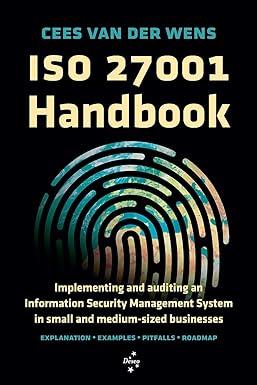Answered step by step
Verified Expert Solution
Question
1 Approved Answer
How well do they manage sourcing and production, accounts receivable, inventory, and fixed assets? Have there been major changes in assets in the past or
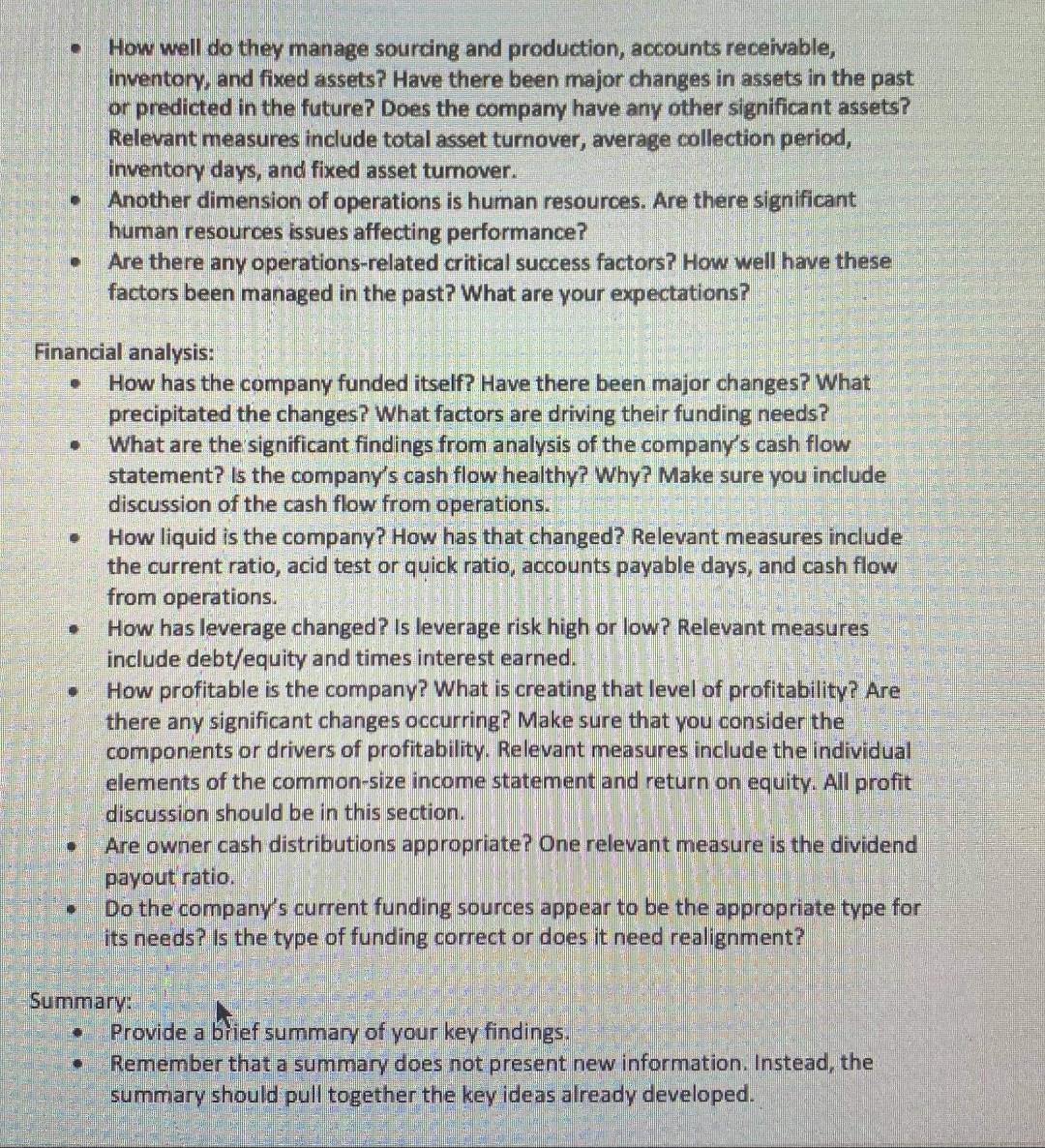
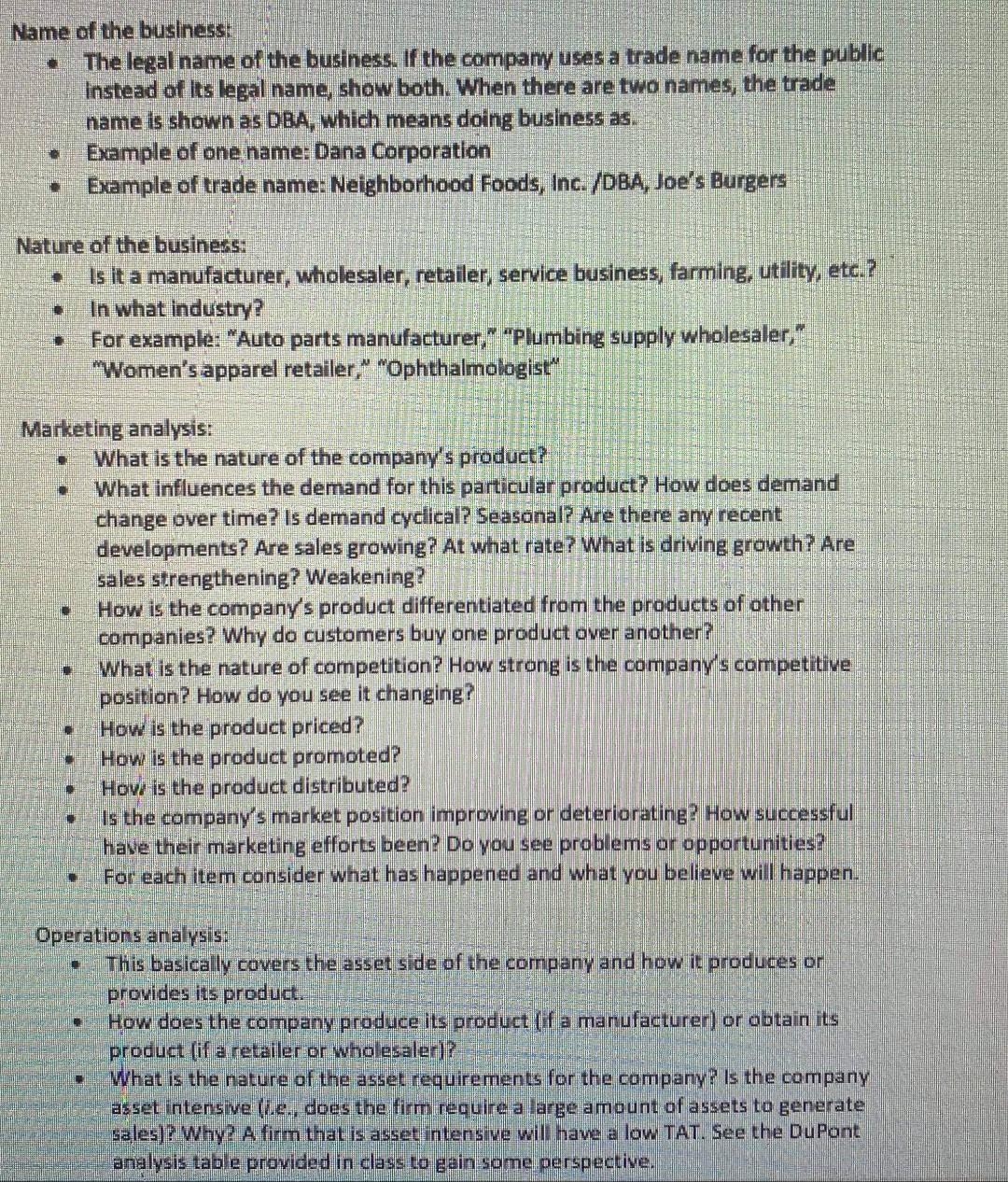
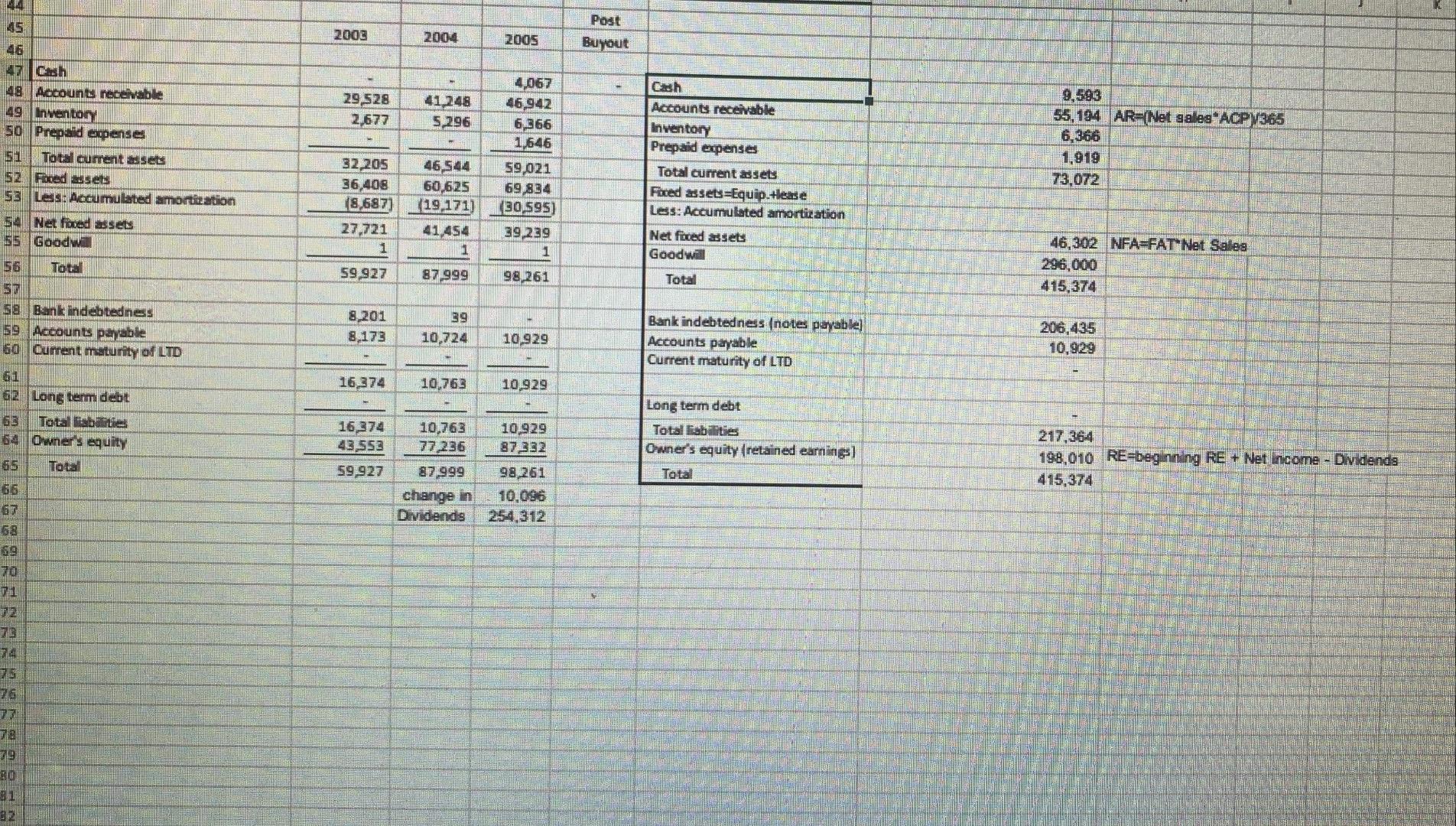
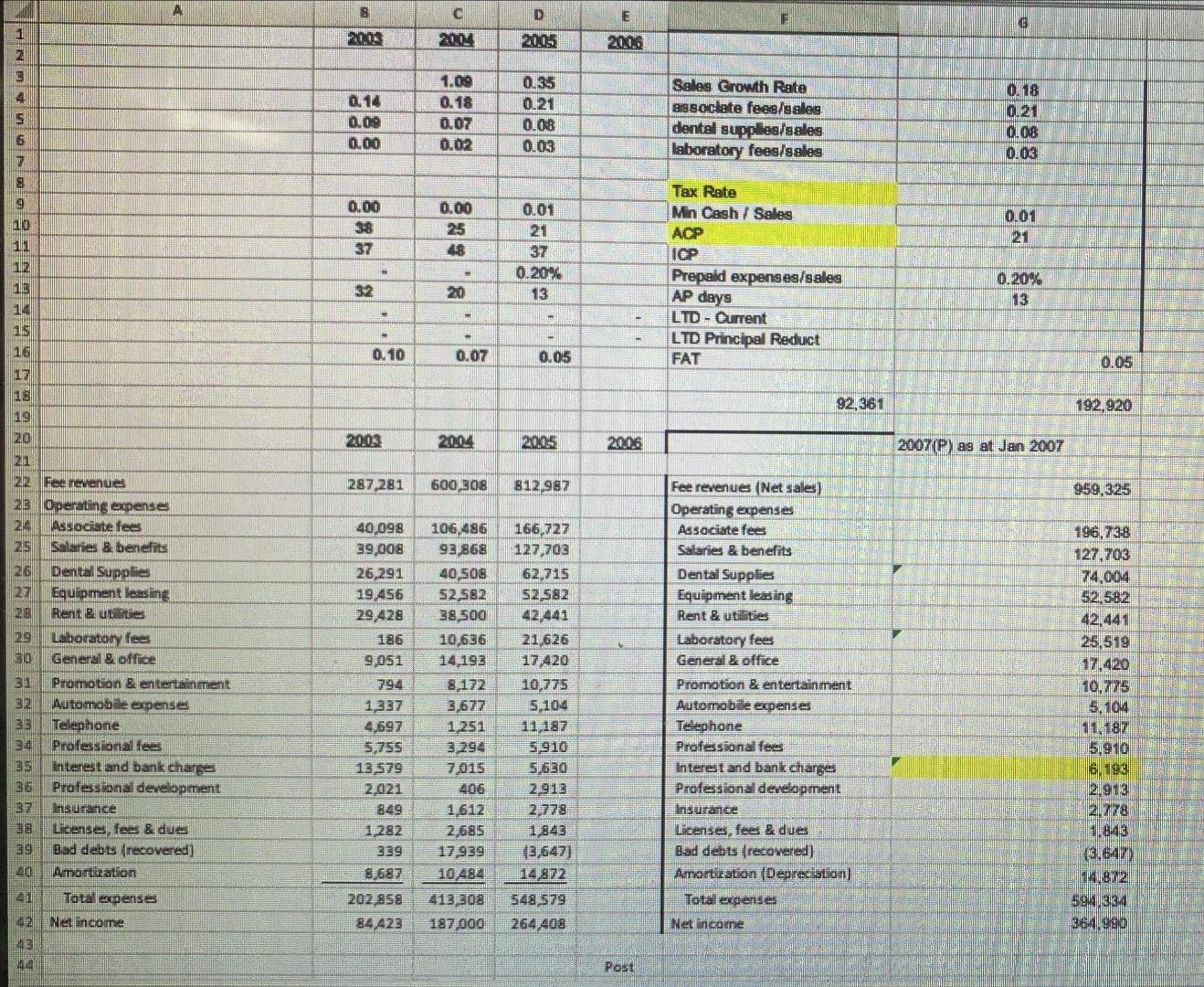
How well do they manage sourcing and production, accounts receivable, inventory, and fixed assets? Have there been major changes in assets in the past or predicted in the future? Does the company have any other significant assets? Relevant measures include total asset turnover, average collection period, Inventory days, and fixed asset tumover. Another dimension of operations is human resources. Are there significant human resources issues affecting performance? Are there any operations-related critical success factors? How well have these factors been managed in the past? What are your expectations? . Financial analysis: How has the company funded itself? Have there been major changes? What precipitated the changes? What factors are driving their funding needs? What are the significant findings from analysis of the company's cash flow statement? Is the company's cash flow healthy? Why? Make sure you include discussion of the cash flow from operations. How liquid is the company? How has that changed? Relevant measures include the current ratio, acid test or quick ratio, accounts payable days, and cash flow from operations. How has leverage changed? Is leverage risk high or low? Relevant measures include debt/equity and times interest earned. How profitable is the company? What is creating that level of profitability? Are there any significant changes occurring? Make sure that you consider the components or drivers of profitability. Relevant measures include the individual elements of the common-size income statement and return on equity. All profit discussion should be in this section. Are cash distributions appropriate? One relevant measure is the dividend payout ratio. Do the company's current funding sources appear to be the appropriate type for its needs? Is the type of funding correct or does it need realignment? Summary: Provide a brief summary of your key findings. Remember that a summary does not present new information. Instead, the summary should pull together the key ideas already developed. 6 Name of the business: The legal name of the business. If the company uses a trade name for the public Instead of Its legal name, show both. When there are two names, the trade name is shown as DBA, which means doing business as. Example of one name: Dana Corporation Example of trade name:Neighborhood Foods, Inc. /DBA, Joe's Burgers Nature of the business: Is it a manufacturer, wholesaler, retailer, service business, farming, utility, etc.? In what industry? For example: "Auto parts manufacturer, - "Plumbing supply wholesaler, MWomen's apparel retailer," "Ophthalmologist Marketing analysis: What is the nature of the company's product? What influences the demand for this particular product? How does demand change over time? Is demand cyclical? Seasonal? Are there any recent developments? Are sales growing? At what rate? What is driving growth? Are sales strengthening? Weakening? How is the company's product differentiated from the products of other companies? Why do customers buy one product over another? What is the nature of competition? How strong is the company's competitive position? How do you see it changing? How is the product priced? How is the product promoted? How is the product distributed? Is the company's market position improving or deteriorating? How successful have their marketing efforts been? Do you see problems or opportunities? For each item consider what has happened and what you believe will happen. Operations analysis: This basically covers the asset side of the company and how it produces or provides its product. How does the company produce its product (if a manufacturer) or obtain its product (if a retailer or wholesaler? What is the nature of the asset requirements for the company? Is the company asset intensive (.e., does the firm require a large amount of assets to generate sales)? Why? A firm that is asset intensive will have a low TAT. See the DuPont analysis table provided in class to gain some perspective. 2003 2004 2005 Post Buyout 4,067 29.528 2,677 41 248 5.296 A cash 48 Accounts receivable 49 Inventory 50 Prepaid expenses Tota current assets 52 Foed assets 53 Less: Accumulated amortization 9,593 55,194 AR=(Net sales" ACPV365 6.366 32,205 36,408 18,687) 46,544 60.625 (19 171) 46,942 6,366 1,646 59,021 69 834 (30,595) 39 239 Cash Accounts receivable Inventory Prepaid expenses Total current assets Fored assets Equip. Hease Less: Accumulated amortization Net foved assets Goodwill 73,072 54 Net foved assets 55 Goodwill 27.721 1 1 Total 46,302 NFA=FATNet Sales 296.000 415,374 59.927 87 999 98,261 Total 58 Bank indebtedness 59 Accounts payable 60 Ourrent maturity of LTD 8,201 8.173 10,724 10,929 Bank indebtedness (notes payable] Accounts payable Current maturity of LTD 206,435 10,929 16,374 10,763 10.929 62 Long term debt Tata Nabes 64 Owner's equity Total 16,374 43 553 Long term debt Total liabilities Owner's equity (retained earning) Total 10,763 10,929 77 236 87 332 87 999 98 261 change in 10.096 Dividends 254,312 217, 364 198,010 RE=beginning RE + Net Income - Dividends 415,374 59.927 68 $19 115 73 8 C D TEL 2004 21:05 2006 2 3 1.09 0.18 0.07 0.02 0.14 0.09 0.00 0.35 0121 0.08 0.03 5 6 Sales Growth Rate associate fees/galeg dental supplies/gales laboratory fees/gales 018 0121 0.08 0.03 9 Tax Rate Min Cash / Sales 0.00 25 0.01 10 11 0.00 38 37 0101 21 37 0.20% 13 Prepaid expenses/sales 0.20% 10 10 AP days - 15 16 LTD - Current LTD Principal Reduct FAT 0.10 0.07 0.05 0.05 17 92,361 192,920 19 20 120.08 2004 20.05 2006 2007P) as at Jan 2007 287 281 600 308 812,987 959, 325 166,727 127,703 62.715 52582 22 Fee revenues 23 Operating expenses 24 Associate fees Swane & benefits 26 Dental Supplies Equipment leasing 28 Rent & uites 29 Laboratory fees 30 General & office Promotion & entertainment Automobile expenses Telephone Professional fees ES interest and bank changes Professional development Insurance 23 Licenses fees & dues 39 Bad debts (recovered) Amartination Total expenses 42 Net income 3 40,098 39,008 26,291 19,456 29,428 186 9.051 794 1,337 4,697 5,755 13.579 2.021 106,486 93,868 40 SOS 52 582 38,500 10,636 14 193 8.172 3,677 1 251 3.294 7015 406 1612 2.685 17.939 10 482 413,308 187 000 Fee revenues (Net sales) Operating expenses Associate fees Salaries & benefits Dental Supplies Equipment leasing Rent&utisties Laboratory fees General & office Promotion & entertainment Automobile expenses Telephone Professional fees Interest and bank changes Profesional development Insurance Licenses, fees & dues Bad debts (recovered) Anartization (Depreciation) Total expenses Net income 196,738 127.703 74,004 52,582 42.441 25,519 17.420 10,7715 5,1044 11.187 15:910 21,626 17 420 10,775 5,104 11.187 5910 5,630 2.913 2778 1843 13,647) 14.872 21913 2778 1813 1282 329 8.687 202,858 84 423 548 579 264 408 594,384 364.990 Post How well do they manage sourcing and production, accounts receivable, inventory, and fixed assets? Have there been major changes in assets in the past or predicted in the future? Does the company have any other significant assets? Relevant measures include total asset turnover, average collection period, Inventory days, and fixed asset tumover. Another dimension of operations is human resources. Are there significant human resources issues affecting performance? Are there any operations-related critical success factors? How well have these factors been managed in the past? What are your expectations? . Financial analysis: How has the company funded itself? Have there been major changes? What precipitated the changes? What factors are driving their funding needs? What are the significant findings from analysis of the company's cash flow statement? Is the company's cash flow healthy? Why? Make sure you include discussion of the cash flow from operations. How liquid is the company? How has that changed? Relevant measures include the current ratio, acid test or quick ratio, accounts payable days, and cash flow from operations. How has leverage changed? Is leverage risk high or low? Relevant measures include debt/equity and times interest earned. How profitable is the company? What is creating that level of profitability? Are there any significant changes occurring? Make sure that you consider the components or drivers of profitability. Relevant measures include the individual elements of the common-size income statement and return on equity. All profit discussion should be in this section. Are cash distributions appropriate? One relevant measure is the dividend payout ratio. Do the company's current funding sources appear to be the appropriate type for its needs? Is the type of funding correct or does it need realignment? Summary: Provide a brief summary of your key findings. Remember that a summary does not present new information. Instead, the summary should pull together the key ideas already developed. 6 Name of the business: The legal name of the business. If the company uses a trade name for the public Instead of Its legal name, show both. When there are two names, the trade name is shown as DBA, which means doing business as. Example of one name: Dana Corporation Example of trade name:Neighborhood Foods, Inc. /DBA, Joe's Burgers Nature of the business: Is it a manufacturer, wholesaler, retailer, service business, farming, utility, etc.? In what industry? For example: "Auto parts manufacturer, - "Plumbing supply wholesaler, MWomen's apparel retailer," "Ophthalmologist Marketing analysis: What is the nature of the company's product? What influences the demand for this particular product? How does demand change over time? Is demand cyclical? Seasonal? Are there any recent developments? Are sales growing? At what rate? What is driving growth? Are sales strengthening? Weakening? How is the company's product differentiated from the products of other companies? Why do customers buy one product over another? What is the nature of competition? How strong is the company's competitive position? How do you see it changing? How is the product priced? How is the product promoted? How is the product distributed? Is the company's market position improving or deteriorating? How successful have their marketing efforts been? Do you see problems or opportunities? For each item consider what has happened and what you believe will happen. Operations analysis: This basically covers the asset side of the company and how it produces or provides its product. How does the company produce its product (if a manufacturer) or obtain its product (if a retailer or wholesaler? What is the nature of the asset requirements for the company? Is the company asset intensive (.e., does the firm require a large amount of assets to generate sales)? Why? A firm that is asset intensive will have a low TAT. See the DuPont analysis table provided in class to gain some perspective. 2003 2004 2005 Post Buyout 4,067 29.528 2,677 41 248 5.296 A cash 48 Accounts receivable 49 Inventory 50 Prepaid expenses Tota current assets 52 Foed assets 53 Less: Accumulated amortization 9,593 55,194 AR=(Net sales" ACPV365 6.366 32,205 36,408 18,687) 46,544 60.625 (19 171) 46,942 6,366 1,646 59,021 69 834 (30,595) 39 239 Cash Accounts receivable Inventory Prepaid expenses Total current assets Fored assets Equip. Hease Less: Accumulated amortization Net foved assets Goodwill 73,072 54 Net foved assets 55 Goodwill 27.721 1 1 Total 46,302 NFA=FATNet Sales 296.000 415,374 59.927 87 999 98,261 Total 58 Bank indebtedness 59 Accounts payable 60 Ourrent maturity of LTD 8,201 8.173 10,724 10,929 Bank indebtedness (notes payable] Accounts payable Current maturity of LTD 206,435 10,929 16,374 10,763 10.929 62 Long term debt Tata Nabes 64 Owner's equity Total 16,374 43 553 Long term debt Total liabilities Owner's equity (retained earning) Total 10,763 10,929 77 236 87 332 87 999 98 261 change in 10.096 Dividends 254,312 217, 364 198,010 RE=beginning RE + Net Income - Dividends 415,374 59.927 68 $19 115 73 8 C D TEL 2004 21:05 2006 2 3 1.09 0.18 0.07 0.02 0.14 0.09 0.00 0.35 0121 0.08 0.03 5 6 Sales Growth Rate associate fees/galeg dental supplies/gales laboratory fees/gales 018 0121 0.08 0.03 9 Tax Rate Min Cash / Sales 0.00 25 0.01 10 11 0.00 38 37 0101 21 37 0.20% 13 Prepaid expenses/sales 0.20% 10 10 AP days - 15 16 LTD - Current LTD Principal Reduct FAT 0.10 0.07 0.05 0.05 17 92,361 192,920 19 20 120.08 2004 20.05 2006 2007P) as at Jan 2007 287 281 600 308 812,987 959, 325 166,727 127,703 62.715 52582 22 Fee revenues 23 Operating expenses 24 Associate fees Swane & benefits 26 Dental Supplies Equipment leasing 28 Rent & uites 29 Laboratory fees 30 General & office Promotion & entertainment Automobile expenses Telephone Professional fees ES interest and bank changes Professional development Insurance 23 Licenses fees & dues 39 Bad debts (recovered) Amartination Total expenses 42 Net income 3 40,098 39,008 26,291 19,456 29,428 186 9.051 794 1,337 4,697 5,755 13.579 2.021 106,486 93,868 40 SOS 52 582 38,500 10,636 14 193 8.172 3,677 1 251 3.294 7015 406 1612 2.685 17.939 10 482 413,308 187 000 Fee revenues (Net sales) Operating expenses Associate fees Salaries & benefits Dental Supplies Equipment leasing Rent&utisties Laboratory fees General & office Promotion & entertainment Automobile expenses Telephone Professional fees Interest and bank changes Profesional development Insurance Licenses, fees & dues Bad debts (recovered) Anartization (Depreciation) Total expenses Net income 196,738 127.703 74,004 52,582 42.441 25,519 17.420 10,7715 5,1044 11.187 15:910 21,626 17 420 10,775 5,104 11.187 5910 5,630 2.913 2778 1843 13,647) 14.872 21913 2778 1813 1282 329 8.687 202,858 84 423 548 579 264 408 594,384 364.990 Post
Step by Step Solution
There are 3 Steps involved in it
Step: 1

Get Instant Access to Expert-Tailored Solutions
See step-by-step solutions with expert insights and AI powered tools for academic success
Step: 2

Step: 3

Ace Your Homework with AI
Get the answers you need in no time with our AI-driven, step-by-step assistance
Get Started


